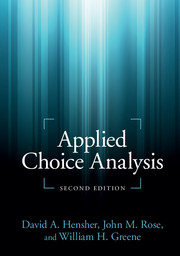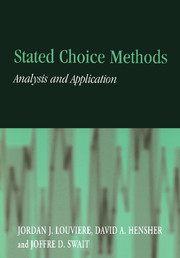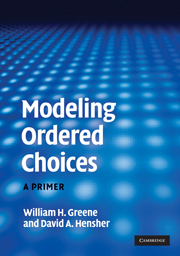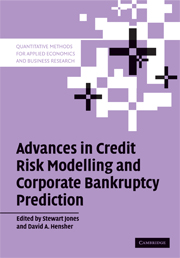Applied Choice Analysis
The second edition of this popular book brings students fully up to date with the latest methods and techniques in choice analysis. Comprehensive yet accessible, it offers a unique introduction to anyone interested in understanding how to model and forecast the range of choices made by individuals and groups. In addition to a complete rewrite of several chapters, new topics covered include ordered choice, scaled MNL, generalized mixed logit, latent class models, group decision making, heuristics and attribute processing strategies, expected utility theory, and prospect theoretic applications. Many additional case studies are used to illustrate the applications of choice analysis with extensive command syntax provided for all Nlogit applications and datasets available online. With its unique blend of theory, estimation, and application, this book has broad appeal to all those interested in choice modeling methods and will be a valuable resource for students as well as researchers, professionals, and consultants.
- A comprehensive and clear introduction to the theory and practice of choice analysis; assumes little background knowledge and offers an entry point for any individual interested in understanding how to model and forecast the range of choices made by individuals and groups
- The fully updated and revised second edition includes new developments over the last decade, such as attribute processing, perceptual conditioning, and risk attitude
- Introduces readers to the full range of discrete choice modelling methods, including labelled and unlabelled alternatives as well as ordered and unordered alternatives; uses many case studies with NLOGIT command syntax to illustrate the application of one or more state-of-the-art choice models
Reviews & endorsements
'This is an enormous book, covering in extraordinary detail all the topics selected by these respected authors. It represents a substantial update and renewal of the material covered in the first edition. In my opinion it should be on the shelves of anyone dealing with discrete choice models.' Juan de Dios Ortúzar Salas, Pontificia Universidad Católica de Chile
'Choice modelling is a very active and rapidly evolving field, with applications across numerous disciplines. The first edition of Applied Choice Analysis accomplished the major task of making the breadth of work accessible to a wide audience, with hands on examples provided throughout. Nine years on, the field has developed further, and David A. Hensher, John M. Rose and William H. Greene have again performed a remarkable job in explaining these new methods without unnecessary jargon and complexity, helping to educate the next generation of choice modellers and striking exactly the right balance between theory and practice.' Stephane Hess, University of Leeds
'The new edition of this already very popular book provides substantial added value to readers. Applied choice analysis has now been extended to include all recent developments. More intuition and further clarifications have been added. The examples provided cover thoroughly the range of case study applications. This book will work perfectly as a step-by-step introduction for the neophite as well as a core reference for the practitioner. The authors have managed to strike the right balance between practicality and accuracy, without subtracting much of the econometric details.' Riccardo Scarpa, Gibson Chair for MayFood, Rural and Environmental Economics, Queens University Belfast
'I cannot imagine a better introduction to choice modeling. The authors manage to bring a vivid, storytelling voice to this complex topic, with language that has personality and rhythm. The various interrelated concepts and procedures that constitute choice modeling come across as simple and straightforward. An amazing feat. The ins-and-outs of a computer code are also taught along with the statistical methods. This integration of computer language within the text is unusual and highly valuable, giving readers all the steps that are needed to implement the methods on their own data.' Kenneth Train, Adjunct Professor, University of California, Berkeley
Product details
June 2015Paperback
9781107465923
1216 pages
246 × 176 × 51 mm
2.37kg
150 b/w illus. 182 tables
Available
Table of Contents
- Preface
- Part I. Getting Started:
- 1. In the beginning
- 2. Choosing
- 3. Choice and utility
- 4. Families of discrete choice models
- 5. Estimating discrete choice models
- 6. Experimental design and choice experiments
- 7. Statistical inference
- 8. Other matters that analysts often inquire about
- Part II. Software and Data:
- 9. Nlogit for applied choice analysis
- 10. Data set up for Nlogit
- Part III. The Suite of Choice Models:
- 11. Getting started modeling: the workhorse - multinominal logit
- 12. Handling unlabeled discrete choice data
- 13. Getting more from your model
- 14. Nested logit estimation
- 15. Mixed logit estimation
- 16. Latent class models
- 17. Binary choice models
- 18. Ordered choices
- 19. Combining sources of data
- Part IV. Advanced Topics:
- 20. Frontiers of choice analysis
- 21. Attribute processing, heuristics, and preference construction
- 22. Group decision making
- Select glossary
- References
- Index.







